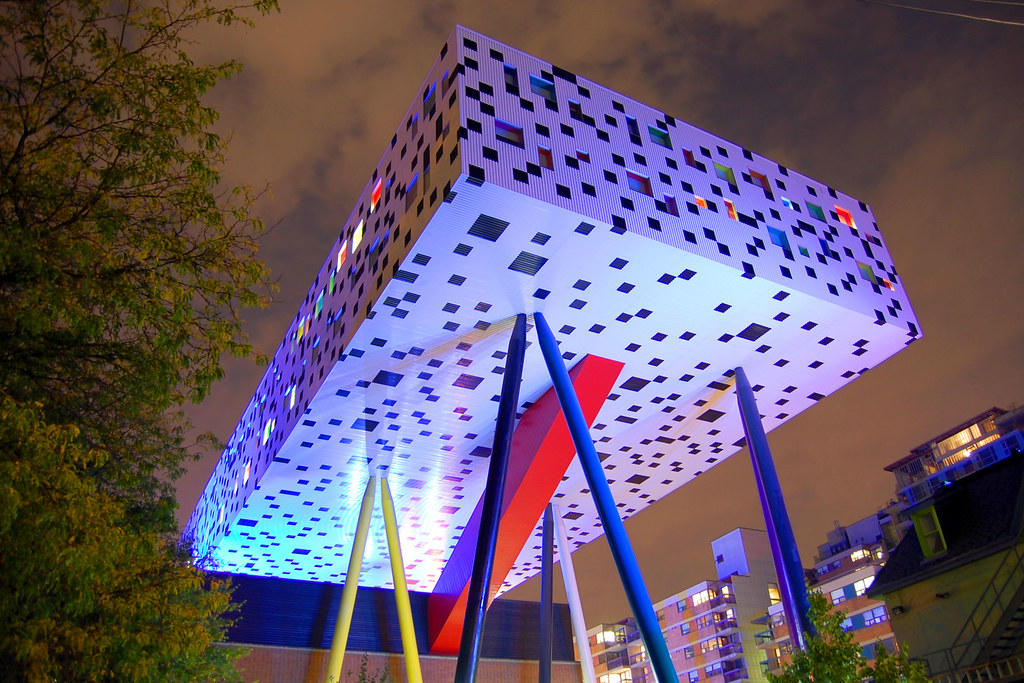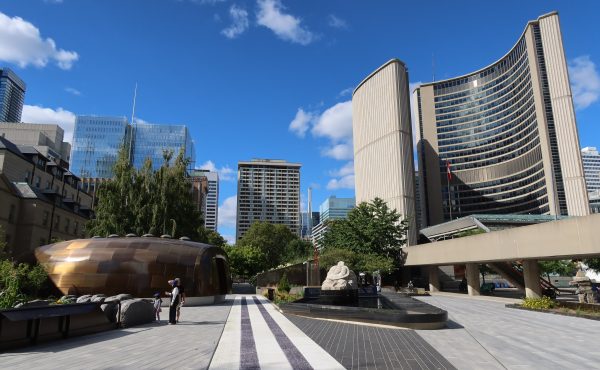

Consistent Spacing Toronto readers will recall last June students in my then-brand-new 3rd year Cities for People workshop/course at OCAD University posted their work here on the blog. The course has been in full swing again for a few weeks now, and students are about to start posting again. We hope you, our good readers, will contribute to their work by offering observations and thoughts on their findings and ideas.
Cities are for a lot of things, but they’re mostly for people. Or should be. We can all point to many examples where the people get overlooked and urban design is driven by something else. Maybe it’s the car that takes precedence, or a building that meets the sidewalk poorly, or maybe people just get overlooked because the designers forgot who they’re ultimately designing for.
In Cities for People, Toronto is our laboratory and our classroom is a sidewalk. We have been looking at interesting initiatives and designs around the city. We’ve seen a small industry tucked into a residential neighbourhood at Coach House Books; gone for a ravine and city walk with arborist Todd Irvine; walked the east side of Toronto with Jane Farrow of Jane’s Walk; been to the city of Toronto archives and seen their ongoing rental housing in Toronto exhibit; and walked the waterfront with Margaret Goodfellow of Waterfront Toronto and co-author of the Guidebook to Contemporary Architecture in Toronto. Soon we’ll be walking around St. Jamestown while hearing about the Tower Renewal program from Graeme Stewart of ERA Architects who originally created the project and heading up to Yorkdale Mall to see Art Starts new community arts hub headquarters (yes! under the mall).
In part, their main assignment was to pick a neighbourhood that isn’t one of Toronto’s “superstar hoods” (that is, not the Annex, Queen West, Kensington or any of the places we hear enough about already), undertake some primary and secondary research and (quickly!) identify issues or narrative threads in the neighbourhood that would then be the crux of a design intervention they create to either address that problem or encourage what’s already happening there. Over the coming days we will be featuring the research portion of their work here on Spacing to both show you what some of these talented OCAD students are thinking and also to invite you to comment on their work — so stay tuned for more Cities for People. Later, we’ll be posting the proposals they came up with as well.
Photo by John Vetterli.



One comment
As a citizen, great stuff. As an OCA (I just dated myself!) grad, great stuff.